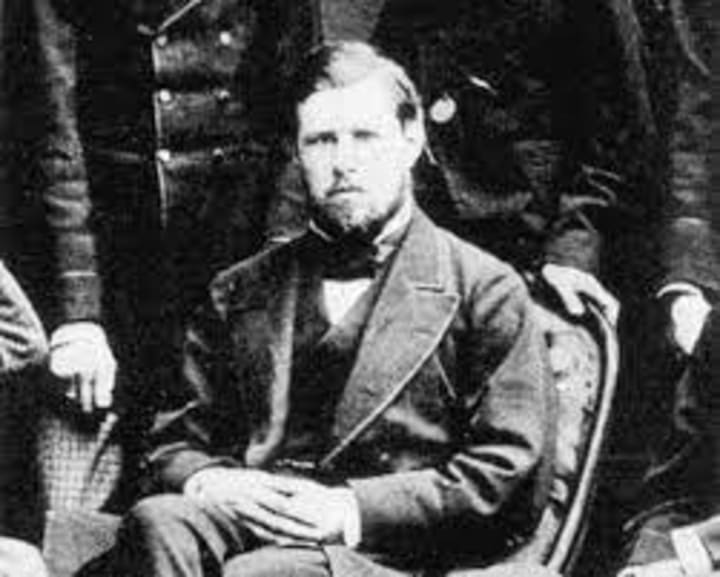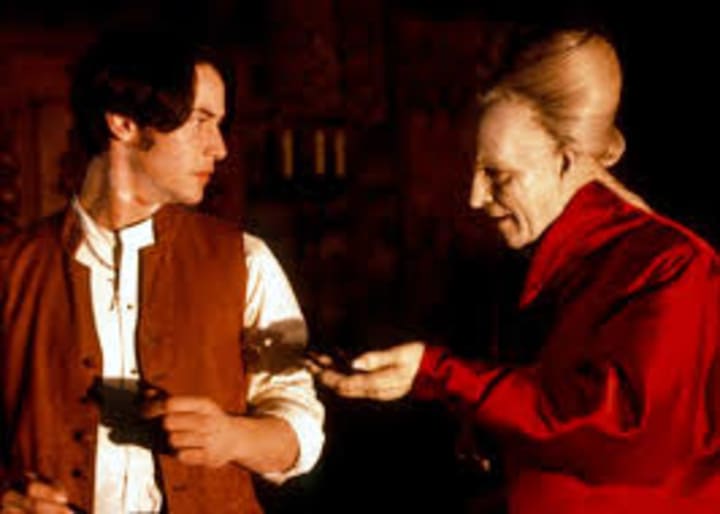Who Was (Or Is) Dracula?
Was Bram Stoker's Character Real?

Created in 1897, in the novel “Dracula”, Bram Stoker named him “Vlad.” He was the start of the whole horror / vampire ‘world’ in film and thousands have enjoyed being scared to death, reading the novel over and over again. A purely fictional character, the only connection with the ‘real world’ is his name Vlad, which is connected to Vlad III, Prince of Wallachia or Vlad the Impaler.
“Dracula” is a Gothic horror, written during the reign of Queen Victoria, by the Irish author Bram Stoker. The basic story is of Dracula moving from Transylvania to England in search of fresh blood (to spread the curse of the undead), and the subsequent battle between good and evil --- Dracula and Professor Abraham Van Helsing. This novel ‘established’ many of the conventions and ideas of vampire fantasy. Films and television series have ‘spawned’ many interpretations.
The novel is written through letters and diary entries, newspaper articles, telegrams and even a ship’s log. It is set in Transylvania and England and between 3rd May and 6th November. Bram Stoker had (one hell) of an imagination! Rather than explain “the plot”, I’ll let you read it --- but don’t have nightmares!
Count Dracula is considered to be the prototypical and the archetypical vampire for subsequent works of horror fiction. He is also seen as the ‘origin’ of the werewolf. One of the Count’s powers was the ability to turn others into vampires by biting them and infecting them with the ‘vampiric disease.’ In the novel, Count Dracula is an undead, centuries-old vampire, and a Transylvanian nobleman who claims to be a Szekely descended from Attila the Hun. This Count is a handsome devil and charismatic, with an aristocratic charm, and he lives in a castle in the Carpathian Mountains.
In the novel, Count Dracula is described thus: “he was in life a most wonderful man. Soldier, statesman and alchemist, Which latter was the highest development of the scientific knowledge of his time. He had a mighty brain, a learning beyond compare, and a heart that knew no fear and no remorse --- there was no branch of knowledge of his time that he did not essay.”
We’re told that Dracula studied the black arts and had a deep knowledge of alchemy and magic. Dead and buried in a great tomb in the chapel of his castle, Dracula “returns from death as a vampire and lives for several centuries in his castle with three terrifyingly beautiful female vampires beside him.” I find it fascinating that Bram Stoker gave his Count such a ‘large’ character.
The Count wears a mask of cordiality, often flying into fits of anger when his plans are frustrated. He has an appreciation for ancient architecture, a new home would take a century for it to be comfortable. Dracula oftens says that he too can love even though he ‘pities’ ordinary humans. As the novel progresses, he takes on a more youthful appearance: “I saw --- Count Dracula --- with a red light of triumph in his eyes, and with a smile that Judas in hell might be proud of.” (Chapter 4) Naturally, Count Dracula possesses great wealth and servants who are loyal to him.
We know that in the novel Dracula can use many different supernatural abilities, and it is believed that he got these through his dealings with the Devil. He has no reflection in the mirror or a shadow, is immune to ‘conventional’ means of attack and can defy gravity (to a certain extent). He also has powerful hypnotic, telepathic and illusionary abilities. “He has amassed cunning and wisdom throughout centuries.”

Thus, is Bram Stoker’s character, Count Dracula, But where did Stoker get such a character from? Stoker was a business manager for the Lyceum Theatre, London, and he would supplement his income by writing, Dracula being his most famous novel published in 1897. Parts of the novel are set around Whitby (on the Yorkshire coast) where Stoker spent his holidays. Before writing Dracula, he spent many years researching folklore and stories of vampires. This, with Stoker’s knowledge of Wallachia Vlad III Dracula (which he first learned about in 1881), inspired the novel. However, the similarity between the two ends with the name and some references towards the Romanian history. Dracula’s mannerisms were copied from the very real actor Henry Irving, who often performed at the Lyceum Theatre. Stoker hoped that Irving would play Dracula at the Theatre, but he refused. However, the gestures and gentlemanly mannerisms are unmistakable.
The novel was published by A.Constable and Company and cost six shillings. It was bound in yellow cloth and titled in red letters. Although some Victorians called it “the sensation of the season”, it was not an immediate bestseller. The author Arthur Conan Doyle (Sherlock Holmes) wrote to Stoker: “I write to tell you how very much I have enjoyed reading Dracula. I think it is the very best story of diablerie which I have read for many years.” Praise indeed!
Stoker did not become rich from this novel and died, after suffering from a number of strokes, in 1912. His novel became famous when Dracula was put on the screen, with many adaptations being put into film.

Who, though, was the “Real Vlad Dracula”? Known as “Vlad the Impaler”, Vlad III Dracula was born in 1431 in Transylvania, Romania. He was the second of four brothers born into the noble family of Vlad II Dracul. (Dracula meaning “Son of Dracul” or “Dragon”). This was after his father’s induction into the Order of the Dragon. His father and elder brother were assassinated and this started Vlad on a life long series of campaigns to regain his father’s seat. His penchant for impaling his enemies on stakes in the ground and leaving them to die earned him the name “Vlad the Impaler.” Vlad was killed in battle in 1476 and has remained a hero for his efforts against Ottoman encroachment.
So there we have it! The author, his “creature” and the real Vlad III Dracula. Whichever way you look at the story --- Bram Stoker had (one hell) of an imagination!

About the Creator
Ruth Elizabeth Stiff
I love all things Earthy and Self-Help
History is one of my favourite subjects and I love to write short fiction
Research is so interesting for me too






Comments
There are no comments for this story
Be the first to respond and start the conversation.